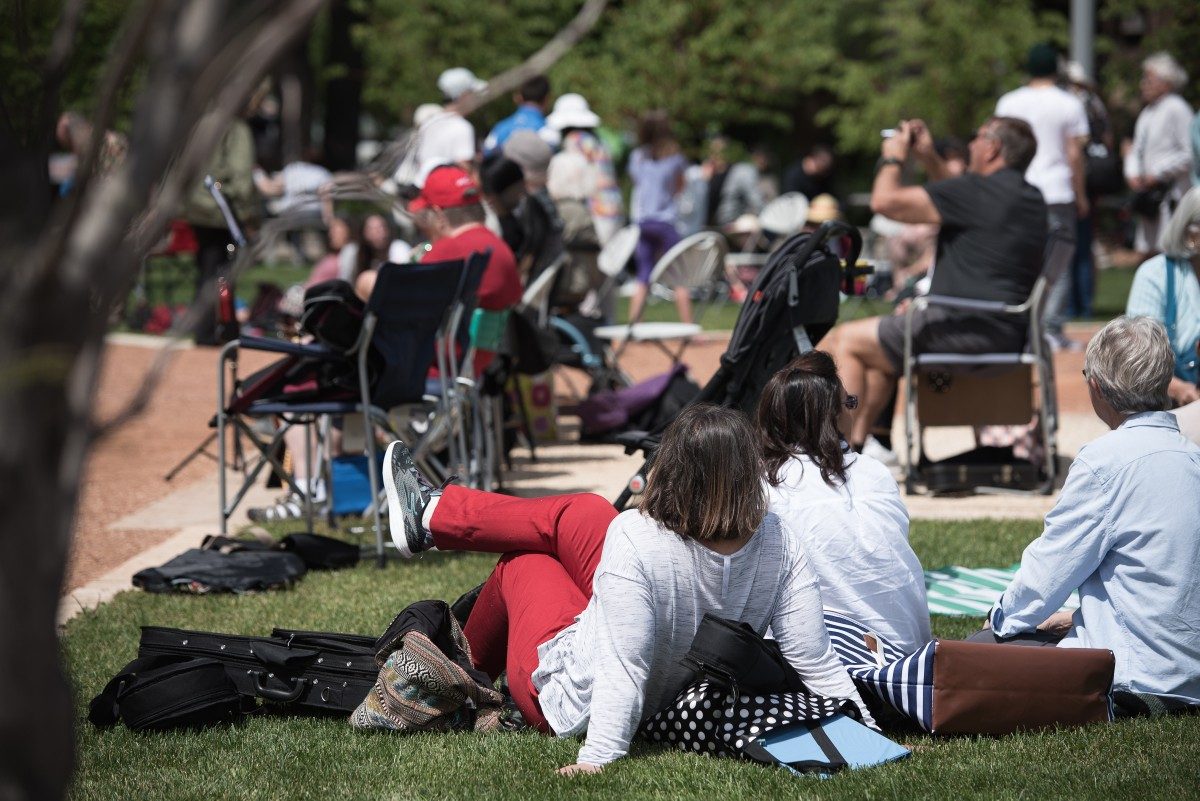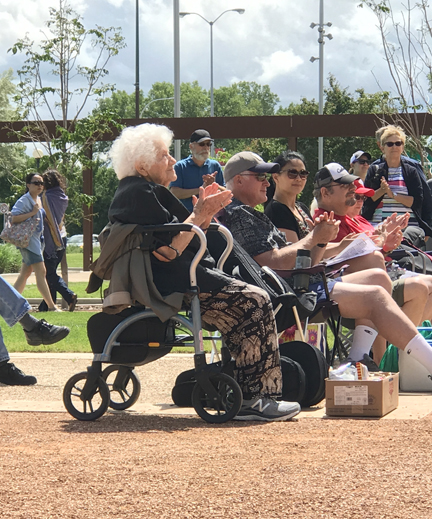
People gather in Upper Fort Garry park to remember the late Garry Hilderman. Photo Courtesy of David Moder.
Upper Fort Garry Provincial Park forms Winnipeg’s largest downtown picnic and remembers University of Manitoba alumnus, Garry Hilderman
The largest picnic in Winnipeg’s downtown was assembled on June 30th to celebrate Canada’s 150th birthday and to remember the late Garry Hilderman, one of the main proponents of the park.
An alumnus of the University of Manitoba’s Faculty of Architecture, Hilderman founded HTFC Planning & Design, a multi-disciplinary landscape architecture and planning firm. He sat on many boards and committees in Winnipeg, including The Forks North Portage Partnership and the University of Manitoba’s Faculty of Architecture. In 2010, Hilderman was inducted into the Order of Canada for his work in developing and conserving important parks and historic sites, through his work as a landscape architect and designer.
Garry’s family, friends and colleagues celebrated his life in July of 2016, the first summer after his death, in the park that Garry had envisioned and participated in creating for many years. The Ukulele Club of Winnipeg, of which Garry and Faye were founding members, played at his memorial service. Friends of Upper Fort Garry along with Garry’s ukulele friends decided to hold a picnic every year on June 30th, Garry’s birthday. This year, honouring Canada’s 150th, they challenged over 150 Winnipeggers to take their lunch outside for the picnic to enjoy two hours of live music. Grandchildren distributed free cookies and Toad Hall Toys provided kazoos for family fun and participation.
Upper Fort Garry Park
Dr. Jerry Gray, Chair of the Friends of Upper Fort Garry notes that “Garry, in his role as a volunteer Director of the Friends was instrumental in overseeing the revitalization of this significant historical site which is an asset, for Manitoba, for western Canada and indeed, for all of Canada. The Park establishes a completely new model for the interpretation of historic landscapes in cities.”
This National Historic Site is situated in the heart of Winnipeg’s downtown, and is one of Western Canada’s most significant historic assets. Its stories are rich, complex, and controversial.
Working closely with The Friends of Upper Fort Garry, the design team composed of HTFC and Cohlmeyer Architecture envisioned a heritage site that looks forward as well as back, using cutting-edge technology and art to encourage visitors to debate, question, and attend to the history that made us who we are, and continues to be written today.

“Since its inception, Upper Fort Garry has been a place steeped in the tension between multicultural democratic ideals and factional infighting. Its stories are rich, complex, and controversial. There is no single correct telling,” says Glen Manning, principal of HTFC Planning & Design. “And 165 years later, some of the themes of racism, nationalism, immigration and representation echo with renewed relevance.”
Manning, who worked closely with Hilderman, wrote a moving tribute to honour his contributions:
I did not know Garry very well in his life outside the office, but it was pretty clear that he held on tight to the things he really cared about: his family, his music, his creative impulses, and his privacy. Garry certainly held on tight to Upper Fort Garry.
That is why I am glad Faye selected this place to remember Garry, rather than the other important and well loved places like Leo Mol sculpture garden, Fort Whyte Alive, Oak Hammock Marsh, or Oodena at the Forks. I worked with Garry on most of these and none were as tightly held as UFG.
Maybe it was because he was the client in this case, rather than lead designer, and he was like a nervous passenger clutching the dashboard – though he could hardly be described as a passenger on this trip. I think there was more to it than that. Garry had been pushing since the 70’s to bring Upper Fort Garry properly into the public eye. Then one day, not long after the Friends of Upper Fort Garry had won the right to develop the site, he discovered some writing by John Ralston Saul that galvanized his thinking about the fort. The passage says the indigenous way, the Metis way, is at the heart of what we now consider the Canadian way: that spirit of compromise, flexibility and common sense prevailing over ideology. There are always lots of clamouring factions, but are capable of putting aside cultural and racial difference and pulling together when it is important. It’s one of the reasons multiculturalism works here and few other places in the world.
Garry started talking about nation-building and suggested that modern Canada was born at Upper Fort Garry, not just in the physical sense – the creation of Manitoba did pave the way geographically for a transcontinental Canada – but the modern Canadian spirit was largely forged in the conflicts and resolutions that occurred on this site. Everyone on the project received a copy of JRS’s book A Fair Country, and the UFG mission became more ambitious and vital. The grasp tightened once more. It drove the design team, funders and the Friends crazy at times – but overall, we all benefited from his persistence and his challenge to say more and find new ways to say it, delivering the message that underlies all of this: that ultimately, we are better together.
Content provided by Penny McMillan and Jason Syvixay.


Additional images provided by Faye Hellner and David Moder






